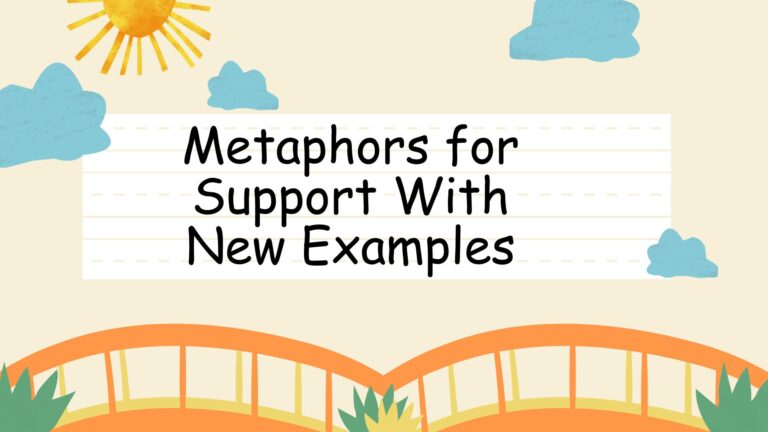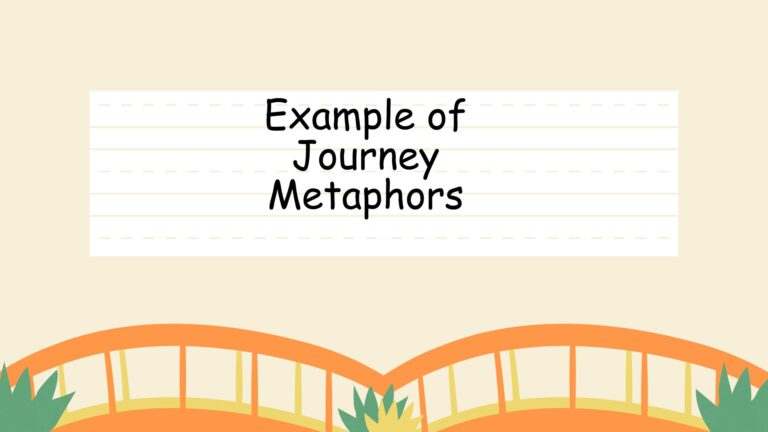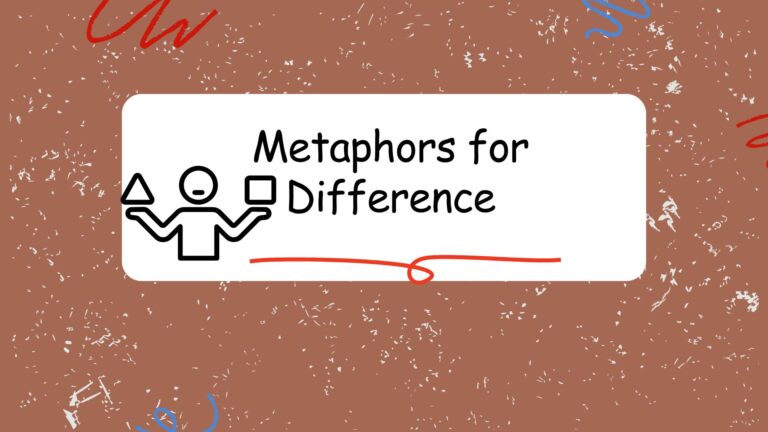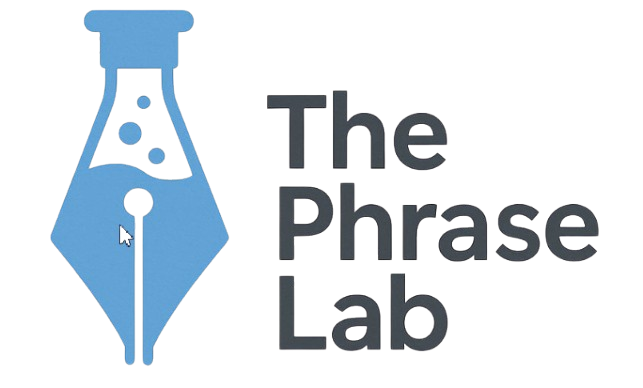
Books as Metaphors: Exploring Figurative Language
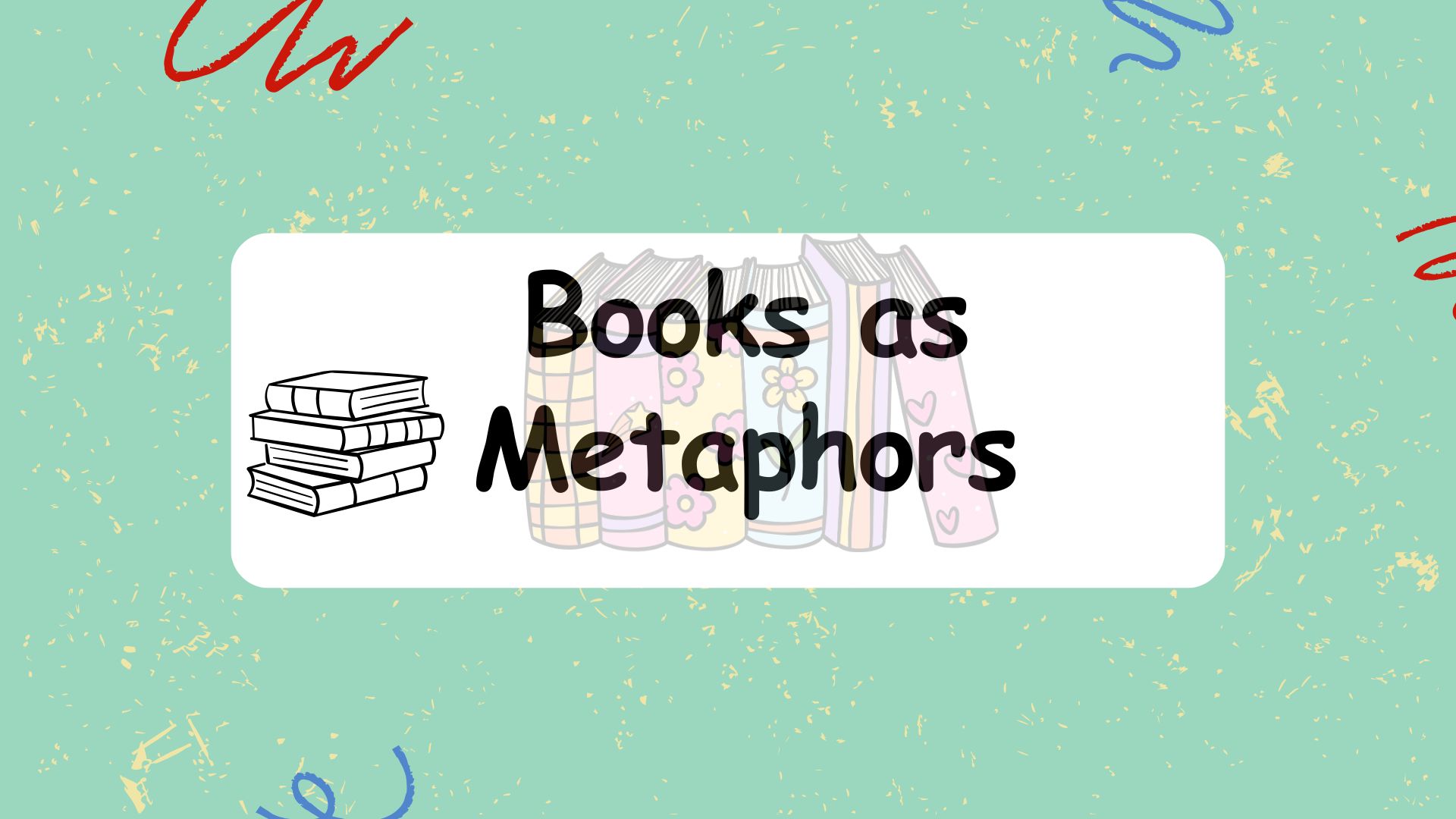
Metaphors are powerful tools in the English language, allowing us to understand complex concepts by relating them to something familiar. When we use metaphors to describe books, we tap into a rich vein of figurative language that enhances our understanding and appreciation of literature. This article delves into the various ways books can be used metaphorically, exploring the different types of metaphors, their structural elements, and how to use them effectively. Whether you are a student, writer, or simply a lover of language, this guide will help you unlock the power of metaphorical language in the context of books.
Table of Contents
- Introduction
- Definition of Metaphor
- Structural Breakdown of Metaphors
- Types of Book Metaphors
- Examples of Book Metaphors
- Usage Rules for Book Metaphors
- Common Mistakes When Using Book Metaphors
- Practice Exercises
- Advanced Topics in Metaphorical Usage
- Frequently Asked Questions
- Conclusion
Introduction
Metaphors are fundamental to how we understand the world. They allow us to take abstract ideas and relate them to concrete experiences. In the realm of literature, metaphors become even more vital, providing a lens through which we can explore themes, characters, and narratives in profound ways. When we talk about books, metaphors help us express the impact they have on us, the insights they offer, and the emotions they evoke. This article will equip you with the knowledge and skills to identify, analyze, and create compelling metaphors for books, enhancing your understanding of literature and your ability to communicate its significance.
Definition of Metaphor
A metaphor is a figure of speech that directly compares two unlike things without using “like” or “as.” It asserts that one thing *is* another, creating a connection based on shared characteristics or qualities. Unlike a simile, which states a resemblance (e.g., “brave as a lion”), a metaphor implies equivalence (e.g., “he is a lion”). The power of a metaphor lies in its ability to transfer qualities from one concept to another, providing new insights and perspectives.
In the context of books, a metaphor can describe the book itself, its content, or the experience of reading it. For instance, saying “This book is a journey” suggests that reading the book is like embarking on an adventure, full of discoveries and challenges. The key is that the comparison is implicit, not explicit.
Structural Breakdown of Metaphors
A metaphor typically consists of two main elements: the tenor and the vehicle. The tenor is the subject being described (in our case, the book or the reading experience), and the vehicle is the thing to which the tenor is being compared. The vehicle provides the qualities that are being transferred to the tenor.
For example, in the metaphor “This book is a key,” the tenor is the book, and the vehicle is the key. The metaphor suggests that the book, like a key, can unlock understanding, knowledge, or new perspectives. The effectiveness of a metaphor depends on the aptness of the comparison and the richness of the associations it evokes.
Understanding the underlying structure of a metaphor allows for deeper analysis and more creative usage. By identifying the tenor and vehicle, one can better appreciate the intended meaning and the potential interpretations of the metaphor.
Types of Book Metaphors
There are many ways to use metaphors to describe books, each highlighting different aspects of the reading experience. Here are some common types of book metaphors:
Book as a Journey
This is one of the most common and versatile book metaphors. It emphasizes the transformative and exploratory nature of reading. A book can take you to new worlds, introduce you to different cultures, and challenge your perspectives.
Book as a Mirror
This metaphor suggests that a book reflects aspects of ourselves, our society, or the human condition. It highlights the book’s ability to provide self-reflection and insight.
Book as a Window
This metaphor contrasts with the “mirror” metaphor, suggesting that a book allows us to see beyond ourselves and into the lives and experiences of others. It emphasizes the book’s ability to broaden our horizons and foster empathy.
Book as a Treasure
This metaphor emphasizes the value and richness of a book. It suggests that reading is a rewarding experience that yields valuable knowledge, wisdom, or pleasure.
Book as a Weapon
This metaphor highlights the power of books to challenge, provoke, or inspire change. It suggests that books can be used to fight injustice, promote understanding, or defend truth.
Book as Food
This metaphor suggests that books can nourish our minds and souls. It emphasizes the idea that reading is essential for intellectual and emotional growth.
Book as a Friend
This metaphor emphasizes the companionship and comfort that books can provide. It suggests that books can offer solace, support, and understanding.
Book as an Escape
This metaphor highlights the ability of books to transport us to different worlds and provide a temporary respite from the challenges of everyday life. It suggests that reading can be a form of relaxation and rejuvenation.
Examples of Book Metaphors
The following tables provide extensive examples of different types of book metaphors, categorized for clarity. Each example illustrates how a book can be compared to something else to convey a deeper meaning or evoke a specific feeling.
Table 1: Book as a Journey
This table showcases metaphors where a book is likened to a journey, emphasizing exploration, discovery, and transformation.
| Metaphor | Explanation |
|---|---|
| “This novel was a rollercoaster of emotions.” | The reading experience was intense and unpredictable, with highs and lows. |
| “Reading this biography was like climbing Mount Everest.” | The book presented significant challenges and required perseverance. |
| “The book was a winding road, full of unexpected turns.” | The plot was complex and unpredictable. |
| “This collection of poems is a voyage through the human heart.” | The poems explore a wide range of emotions and experiences. |
| “The book was a deep dive into the author’s psyche.” | The book provided a profound exploration of the author’s thoughts and feelings. |
| “Reading this history book was a trek through time.” | The book covered a vast period of history. |
| “The novel was a labyrinth of interconnected stories.” | The plot was intricate and difficult to follow. |
| “This self-help book is a roadmap to a better life.” | The book provides guidance and direction for personal growth. |
| “The book was a pilgrimage to the author’s homeland.” | The book explored the author’s cultural heritage. |
| “Reading this science fiction novel was like exploring a new galaxy.” | The book presented imaginative and unfamiliar concepts. |
| “The book was a descent into the underworld of the protagonist’s past.” | The book delved into the dark and troubling aspects of the protagonist’s history. |
| “This cookbook is a culinary expedition around the world.” | The cookbook offers recipes from diverse cultures and regions. |
| “The book was a meandering river, flowing through different landscapes of thought.” | The book explored a variety of ideas and perspectives in a fluid and interconnected way. |
| “Reading this philosophical treatise was like navigating a dense forest.” | The book presented complex and challenging ideas. |
| “The novel was a high-speed chase through the city streets.” | The plot was fast-paced and action-packed. |
| “This travelogue is a journey to the soul of a country.” | The book provides a deep and insightful exploration of a country’s culture and people. |
| “The book was a slow dance through memories and regrets.” | The book explored the past with a sense of nostalgia and introspection. |
| “Reading this mystery novel was like piecing together a puzzle.” | The reader had to actively participate in solving the mystery. |
| “The book was an expedition into the unknown territories of the human mind.” | The book explored the mysteries of consciousness and perception. |
| “This historical novel is a journey back in time.” | The novel vividly recreates a past era. |
| “The book was a marathon, testing my intellectual endurance.” | The book was long and challenging, requiring sustained effort to read. |
| “Reading this collection of short stories was like hopping between different worlds.” | Each story offered a unique and distinct experience. |
| “The book was a scavenger hunt for hidden meanings and symbols.” | The book contained layers of meaning that required careful analysis to uncover. |
| “This guide is a journey towards financial freedom.” | The guide provides a step-by-step approach to achieving financial independence. |
| “The book was a spiraling staircase, leading to unexpected heights of understanding.” | The book gradually increased in complexity, offering new insights at each level. |

Table 2: Book as a Mirror
This table focuses on metaphors where a book is seen as a mirror, reflecting aspects of ourselves, society, or the human condition.
| Metaphor | Explanation |
|---|---|
| “This novel is a mirror reflecting the anxieties of modern society.” | The book reflects and amplifies contemporary societal anxieties. |
| “The book was a mirror to my own struggles and triumphs.” | The book resonated with the reader’s personal experiences. |
| “This collection of essays is a mirror reflecting the diverse voices of the community.” | The essays represent a wide range of perspectives within the community. |
| “The book was a distorted mirror, exaggerating the flaws of human nature.” | The book presented a cynical and exaggerated view of humanity. |
| “This biography is a mirror reflecting the complexities of a flawed genius.” | The biography reveals both the strengths and weaknesses of the subject. |
| “The book was a magnifying glass, revealing the hidden cracks in our social fabric.” | The book exposed the underlying problems and inequalities in society. |
| “This historical account is a mirror reflecting the mistakes of the past.” | The book highlights past errors to prevent them from being repeated. |
| “The book was a clear mirror, showing me my own prejudices and biases.” | The book challenged the reader’s assumptions and beliefs. |
| “This work of satire is a mirror mocking the absurdities of political discourse.” | The book uses humor to criticize and ridicule political rhetoric. |
| “The book was a funhouse mirror, twisting reality into a grotesque caricature.” | The book presented a distorted and exaggerated view of the world. |
| “This memoir is a mirror reflecting the author’s journey of self-discovery.” | The memoir chronicles the author’s personal growth and transformation. |
| “The book was a two-way mirror, allowing me to see both myself and the world around me more clearly.” | The book provided both personal self-reflection and broader societal insights. |
| “This collection of poetry is a mirror reflecting the beauty and pain of the human experience.” | The poems explore a range of emotions and experiences, both positive and negative. |
| “The book was a cracked mirror, reflecting a fragmented and broken world.” | The book portrayed a world characterized by chaos and instability. |
| “This sociological study is a mirror reflecting the changing demographics of our society.” | The study provides insights into the evolving population and social structures. |
| “The book was a polished mirror, presenting an idealized version of reality.” | The book offered a romanticized and unrealistic view of the world. |
| “This psychological thriller is a mirror reflecting the dark recesses of the human mind.” | The thriller explores the sinister and disturbing aspects of human psychology. |
| “The book was a cloudy mirror, obscuring the truth and leaving me with more questions than answers.” | The book was ambiguous and open to interpretation, making it difficult to discern the underlying meaning. |
| “This journalistic investigation is a mirror reflecting the corruption within our institutions.” | The investigation exposes unethical and illegal activities within organizations. |
| “The book was a convex mirror, widening my perspective and allowing me to see the bigger picture.” | The book broadened the reader’s understanding and helped them to consider different viewpoints. |
| “This collection of short stories is a mirror reflecting the diverse experiences of immigrants.” | The stories offer insights into the challenges and triumphs of immigrant communities. |
| “The book was a magnifying mirror, highlighting the minute details of everyday life.” | The book focused on the small and often overlooked aspects of daily routines. |
| “This philosophical treatise is a mirror reflecting humanity’s search for meaning and purpose.” | The treatise explores fundamental questions about existence and the human condition. |
| “The book was a fragmented mirror, reflecting the fractured nature of identity in the modern world.” | The book explored the challenges of maintaining a sense of self in a rapidly changing society. |
| “This scientific study is a mirror reflecting the complex workings of the human brain.” | The study provides insights into the structure and function of the brain. |
Table 3: Book as a Window
This table presents metaphors where a book is seen as a window, allowing us to see beyond our own experiences and into the lives and perspectives of others.
| Metaphor | Explanation |
|---|---|
| “This novel is a window into the lives of refugees.” | The book provides insights into the experiences and challenges faced by refugees. |
| “The book was a window to a different culture and way of life.” | The book broadened the reader’s understanding of other cultures. |
| “This historical account is a window into the past.” | The book offers a glimpse into a bygone era. |
| “The book was a telescope, allowing me to see the world from a new perspective.” | The book broadened the reader’s horizons and challenged their assumptions. |
| “This scientific study is a window into the mysteries of the universe.” | The study provides insights into the workings of the cosmos. |
| “The book was a portal, transporting me to another time and place.” | The book allowed the reader to escape into a different world. |
| “This collection of essays is a window into the minds of leading thinkers.” | The essays provide insights into the ideas and perspectives of prominent intellectuals. |
| “The book was a periscope, allowing me to see what was happening beneath the surface.” | The book revealed hidden truths and underlying realities. |
| “This ethnographic study is a window into the customs and traditions of a remote tribe.” | The study provides insights into the culture and practices of an isolated community. |
| “The book was a looking glass, showing me the world through the eyes of a child.” | The book captured the innocence and wonder of childhood. |
| “This biography is a window into the life and times of a revolutionary leader.” | The biography provides insights into the motivations and actions of a transformative figure. |
| “The book was a skylight, illuminating the dark corners of the human soul.” | The book shed light on the hidden aspects of human nature. |
| “This collection of short stories is a window into the diverse experiences of urban dwellers.” | The stories offer insights into the lives and challenges of people living in cities. |
| “The book was a panoramic window, offering a sweeping view of human history.” | The book provided a broad and comprehensive overview of historical events. |
| “This philosophical treatise is a window into the nature of reality.” | The treatise explores fundamental questions about existence and the universe. |
| “The book was a stained-glass window, filtering reality through a lens of beauty and imagination.” | The book presented a world that was both beautiful and fantastical. |
| “This journalistic investigation is a window into the world of corporate espionage.” | The investigation exposes the secrets and tactics of corporate spies. |
| “The book was a bay window, offering a comfortable and inviting view of the world.” | The book provided a relaxing and enjoyable reading experience. |
| “This collection of poetry is a window into the depths of human emotion.” | The poems explore a wide range of feelings and experiences. |
| “The book was a porthole, offering a limited but intriguing glimpse into a hidden world.” | The book provided a brief but captivating view of a mysterious realm. |
| “This scientific report is a window into the latest advancements in medical research.” | The report provides insights into cutting-edge discoveries in healthcare. |
| “The book was a magnifying glass on society, revealing the intricate details of its inner workings.” | The book allowed for a closer examination of social structures and dynamics. |
| “This memoir is a window into the author’s struggle with mental illness.” | The memoir provides an intimate and honest account of the author’s mental health journey. |
| “The book was a prism, refracting reality into a spectrum of different perspectives.” | The book offered multiple viewpoints and interpretations of events. |
| “This travelogue is a window into the culture and landscapes of exotic destinations.” | The travelogue provides vivid descriptions of far-off places and customs. |
Table 4: Book as a Treasure
This table contains metaphors where a book is likened to a treasure, emphasizing its value, richness, and the rewarding experience of reading.
| Metaphor | Explanation |
|---|---|
| “This book is a treasure trove of knowledge.” | The book contains a wealth of information. |
| “The book was a hidden gem, waiting to be discovered.” | The book was valuable but overlooked. |
| “This collection of poems is a treasure chest of emotions.” | The poems evoke a wide range of feelings. |
| “The book was a goldmine of ideas and insights.” | The book was rich in valuable concepts. |
| “This biography is a priceless artifact of history.” | The biography provides invaluable historical information. |
| “The book was a diamond, sparkling with wit and wisdom.” | The book was brilliant and insightful. |
| “This philosophical treatise is a treasure map to enlightenment.” | The treatise provides guidance towards spiritual understanding. |
| “The book was a jewel, gleaming with beauty and artistry.” | The book was exquisitely written and aesthetically pleasing. |
| “This historical novel is a treasure chest filled with the stories of the past.” | The novel vividly recreates historical events and characters. |
| “The book was a pearl, formed from the grit and suffering of human experience.” | The book was beautiful and valuable, but born from hardship. |
| “This scientific study is a treasure trove of groundbreaking discoveries.” | The study presents significant advancements in scientific knowledge. |
| “The book was a chalice, overflowing with the wisdom of the ages.” | The book contained profound and timeless insights. |
| “This collection of essays is a treasure chest of diverse perspectives.” | The essays represent a wide range of viewpoints. |
| “The book was an antique, preserved and cherished for generations.” | The book was a classic work of literature. |
| “This self-help book is a treasure map to personal fulfillment.” | The book provides guidance towards achieving happiness and satisfaction. |
| “The book was a rare coin, valuable for its historical significance.” | The book offered important insights into the past. |
| “This journalistic investigation is a treasure trove of uncovered truths.” | The investigation reveals hidden facts and realities. |
| “The book was a tapestry, woven with threads of knowledge and imagination.” | The book was rich and complex, combining information and creativity. |
| “This collection of short stories is a treasure chest of human experiences.” | The stories offer insights into a wide range of lives and situations. |
| “The book was a library, filled with endless possibilities for exploration and discovery.” | The book contained a vast amount of information and opportunities for learning. |
| “This memoir is a treasure chest of personal reflections and insights.” | The memoir offers intimate and valuable insights into the author’s life. |
| “The book was a kaleidoscope of ideas, constantly shifting and revealing new patterns of meaning.” | The book offered a dynamic and ever-changing perspective. |
| “This cookbook is a treasure map to culinary delights.” | The cookbook provides recipes for creating delicious and satisfying meals. |
| “The book was a beacon, illuminating the path to understanding and enlightenment.” | The book offered guidance and clarity. |
| “This travel guide is a treasure trove of hidden gems and local secrets.” | The guide provides valuable information for exploring a destination. |

Usage Rules for Book Metaphors
Using metaphors effectively requires careful consideration of several factors. Here are some key rules to follow:
- Clarity: Ensure that the metaphor is clear and easily understood. The connection between the tenor and vehicle should be apparent.
- Relevance: Choose a vehicle that is relevant to the tenor. The qualities of the vehicle should align with the aspects of the book you want to emphasize.
- Originality: Strive for originality in your metaphors. Avoid clichés and overused comparisons.
- Consistency: Maintain consistency in your metaphorical language. Avoid mixing metaphors that clash or create confusion.
- Context: Consider the context in which you are using the metaphor. The appropriateness of a metaphor may depend on the audience and the purpose of your writing.
Common Mistakes When Using Book Metaphors
Here are some common mistakes to avoid when using metaphors for books:
- Mixed Metaphors: Combining two or more incompatible metaphors.
- Incorrect: “This book is a rollercoaster that opened doors to new worlds.” (Mixing a journey metaphor with a “key” or “window” metaphor)
- Correct: “This book is a rollercoaster of emotions.”
- Clichés: Using overused and unoriginal metaphors.
- Incorrect: “This book is an open door.”
- Correct: “This book is a portal, transporting me to a different era.”
- Unclear Metaphors: Using metaphors that are difficult to understand or interpret.
- Incorrect: “This book is a quantum entanglement.” (Unless explained, this is too abstract for most readers)
- Correct: “This book intricately connects seemingly unrelated ideas, like a quantum entanglement.”
- Inappropriate Metaphors: Using metaphors that are inappropriate for the context or audience.
- Incorrect: “This children’s book is a dense philosophical treatise.”
- Correct: “This children’s book is a playful introduction to complex ideas.”
Practice Exercises
Test your understanding of book metaphors with these exercises. Identify the type of metaphor used in each sentence and explain its meaning.
Exercise 1: Identify the Type of Metaphor
| Sentence | Your Answer |
|---|---|
| “This novel is a mirror reflecting the anxieties of our time.” | |
| “Reading this book was like embarking on a thrilling adventure.” | |
| “This biography is a treasure trove of historical information.” | |
| “The book was a window into a different culture.” | |
| “This book is a weapon against ignorance.” | |
| “This book is food for thought.” | |
| “This book was a friend during a difficult time.” | |
| “The book was an escape from reality.” | |
| “This novel is a rollercoaster of emotions.” | |
| “This book is a key to understanding the human condition.” |
Answer Key:
| Sentence | Correct Answer |
|---|---|
| “This novel is a mirror reflecting the anxieties of our time.” | Book as a Mirror |
| “Reading this book was like embarking on a thrilling adventure.” | Book as a Journey |
| “This biography is a treasure trove of historical information.” | Book as a Treasure |
| “The book was a window into a different culture.” | Book as a Window |
| “This book is a weapon against ignorance.” | Book as a Weapon |
| “This book is food for thought.” | Book as Food |
| “This book was a friend during a difficult time.” | Book as a Friend |
| “The book was an escape from reality.” | Book as an Escape |
| “This novel is a rollercoaster of emotions.” | Book as Journey |
| “This book is a key to understanding the human condition.” | Book as a Tool/Key |
Exercise 2: Create Your Own Metaphors
Write a metaphor for each of the following books, using a different type of metaphor for each.
- A science fiction novel
- A historical biography
- A collection of poetry
- A self-help book
- A mystery novel
Example Answers:
- A science fiction novel: “This science fiction novel is a portal to another dimension.” (Book as a Window)
- A historical biography: “This historical biography is a treasure chest filled with the stories of the past.” (Book as a Treasure)
- A collection of poetry: “This collection of poetry is a mirror reflecting the soul.” (Book as a Mirror)
- A self-help book: “This self-help book is a roadmap to a better you.” (Book as a Journey)
- A mystery novel: “This mystery novel is a web of clues, waiting to be untangled.” (Book as a Complex Structure)
Advanced Topics in Metaphorical Usage
For advanced learners, consider exploring these complex aspects of metaphorical usage:
- Extended Metaphors: Developing a single metaphor throughout an entire piece of writing.
- Submerged Metaphors: Using metaphors subtly, without explicitly stating the comparison.
- Conceptual Metaphors: Understanding how metaphors shape our fundamental understanding of abstract concepts.
- Analyzing Metaphorical Systems: Examining how multiple metaphors work together to create a coherent worldview.
Frequently Asked Questions
- What is the difference between a metaphor and a simile?A metaphor directly compares two unlike things without using “like” or “as,” while a simile uses “like” or “as” to state a resemblance. For example, “He is a lion” is a metaphor, while “He is brave as a lion” is a simile.
- Why are metaphors important in literature?Metaphors add depth and complexity to writing, allowing authors to convey abstract ideas, evoke emotions, and create vivid imagery. They enhance the reader’s understanding and appreciation of the text.
- How can I improve my ability to create effective metaphors?Practice is key. Read widely, pay attention to how authors use metaphors, and experiment with different comparisons. Think about the qualities of the subject you want to describe and brainstorm things that share those qualities.
- What are some common pitfalls to avoid when using metaphors?Avoid clichés, mixed metaphors, and unclear metaphors. Ensure that your metaphors are relevant, consistent, and appropriate for the context and audience.
- Can a single book be described using multiple metaphors?Yes, a book can be described using multiple metaphors, each highlighting different aspects of the reading experience. However, it’s important to ensure that the metaphors are consistent and don’t clash with each other.
- How do metaphors affect the reader’s interpretation of a book?Metaphors shape the reader’s understanding and emotional response to a book. They can influence how the reader perceives the characters, themes, and overall message of the text.
- Are some types of book metaphors more effective than others?The effectiveness of a metaphor depends on the context and the specific qualities you want to emphasize. Some metaphors, like “book as a journey,” are versatile and widely applicable, while others may be more appropriate for specific types of books or reading experiences.
- How can I analyze the metaphors used in a literary work?Identify the tenor and vehicle of each metaphor, and consider the qualities that are being transferred. Think about the intended meaning of the metaphor and how it contributes to the overall message of the text. Look for patterns and connections between different metaphors in the work.
Conclusion
Metaphors are essential for expressing the profound impact books have on our lives. By understanding the different types of book metaphors, their structural components, and the rules governing their usage, you can enhance your ability to analyze literature and communicate its significance. Practice creating your own metaphors, paying attention to clarity, relevance, and originality. Avoid common mistakes like mixed metaphors and clichés. With time and effort, you can master the art of using metaphors to illuminate the world of books.

